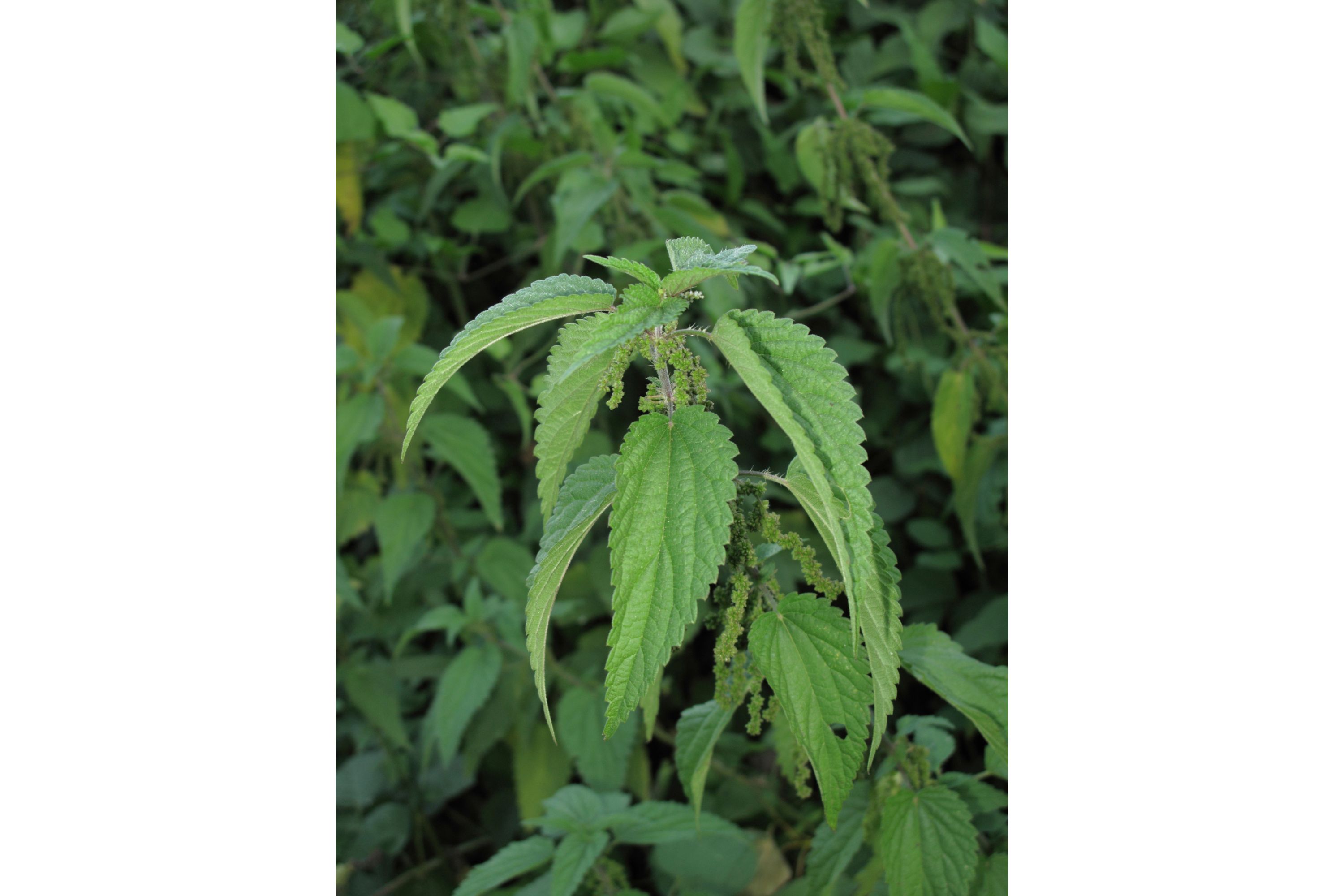Stinging nettle
(Urtica dioica)

Description
Urtica dioica, commonly known as stinging nettle, is a herbaceous perennial plant species that belongs to the Urticaceae family. It is a common plant that can be found in temperate regions throughout the world, including Europe, Asia, North America, and North Africa. Although it is considered a weed by many, it has many beneficial properties and has been used for centuries in traditional medicine. In this article, we will delve into the fascinating world of Urtica dioica, exploring its physical characteristics, habitat, history, and uses. Physical Characteristics: Urtica dioica is a dioecious plant, meaning that it has separate male and female plants. It can grow up to 1-2 meters in height and has a deep green color. The leaves of the plant are opposite, ovate or heart-shaped, and have serrated margins. The stem and leaves are covered in fine hairs that can cause irritation when they come into contact with skin. The plant's flowers are small and green, and they grow in clusters on long, thin spikes. The fruit of the plant is a small, round nutlet that is enclosed in a persistent calyx. Habitat: Stinging nettle is a hardy plant that can grow in a wide variety of habitats, including woodlands, meadows, disturbed areas, and along streams and rivers. It is commonly found in areas with moist, nutrient-rich soil and partial shade. In North America, stinging nettle is particularly abundant in the Pacific Northwest, although it can be found throughout the continent. History: Stinging nettle has been used for thousands of years in traditional medicine. The ancient Egyptians, Greeks, and Romans all used the plant for a variety of medicinal purposes. In medieval Europe, stinging nettle was used to treat arthritis, gout, and asthma, among other ailments. It was also used as a food source, particularly during times of famine. In many cultures, stinging nettle is still used today to treat a wide range of health conditions, including allergies, arthritis, and anemia. Uses: Stinging nettle has many uses, including medicinal, culinary, and industrial. Here are a few examples: Medicinal: Stinging nettle has many medicinal properties, including anti-inflammatory, analgesic, and diuretic effects. It is often used to treat allergies, arthritis, and urinary tract infections. The plant is also believed to have anti-cancer properties and may be effective in treating prostate cancer. Culinary: Stinging nettle has a long history of culinary use. The young leaves can be harvested and cooked like spinach or used to make soup or tea. The leaves can also be dried and used as a seasoning or added to pasta dishes. In some parts of the world, stinging nettle is used to make beer or wine. Industrial: Stinging nettle has been used for centuries to make textiles. The fibers from the plant's stem are strong and flexible and can be spun into a high-quality cloth. The plant is also used in the production of paper, as well as in the cosmetics industry. Precautions: Although stinging nettle has many benefits, it is important to handle the plant with care. The hairs on the plant's stem and leaves can cause skin irritation and should be avoided. It is also important to cook the plant thoroughly before consuming it, as the raw leaves contain substances that can cause digestive upset. Conclusion: Urtica dioica, or stinging nettle, is a versatile plant with a rich history and many uses. Whether it is used for medicinal purposes, culinary applications, or industrial production, stinging nettle is a valuable resource that deserves our attention and respect.
Taxonomic tree:







